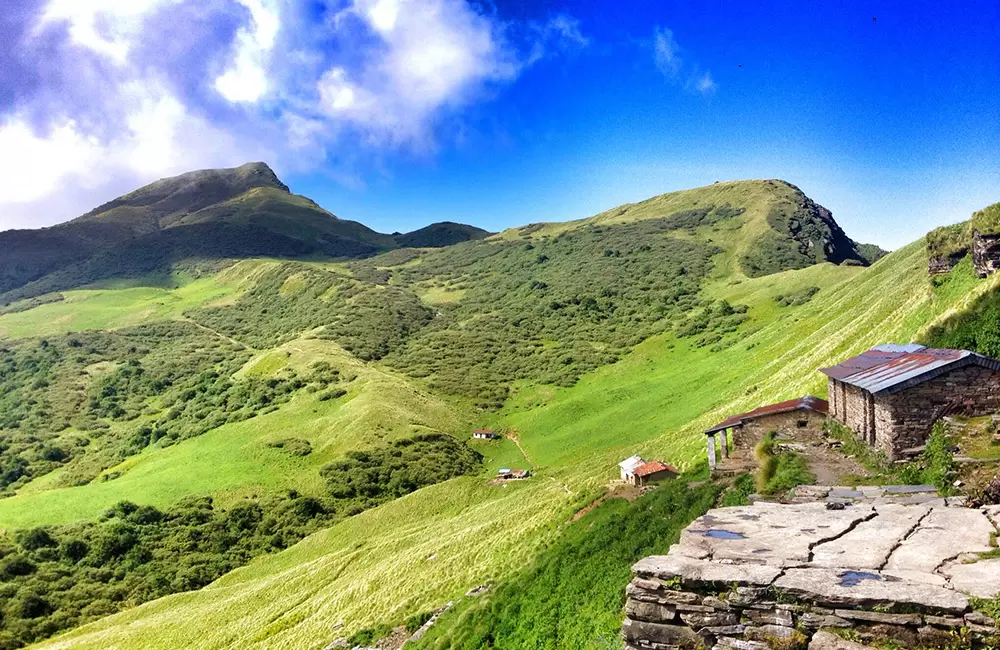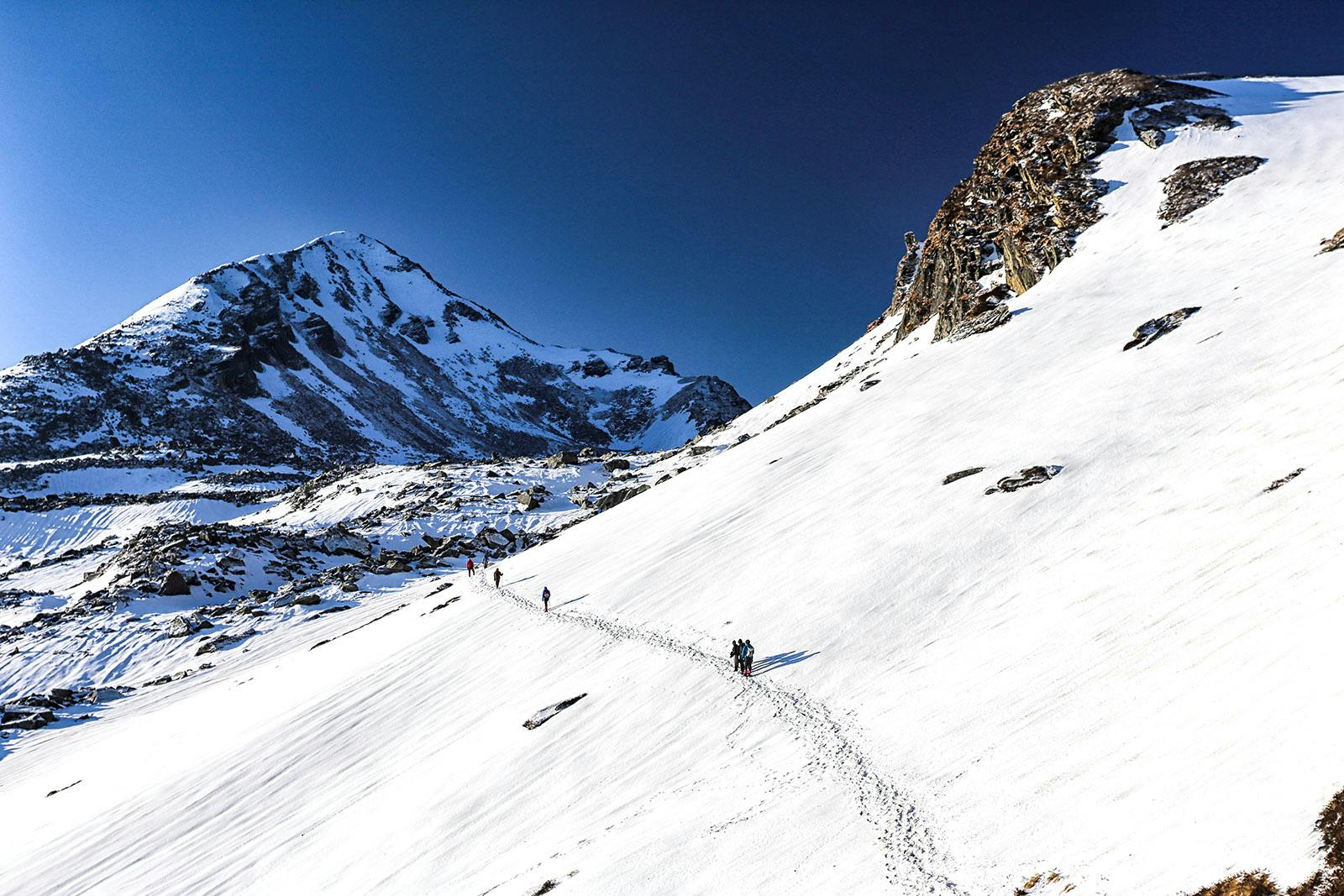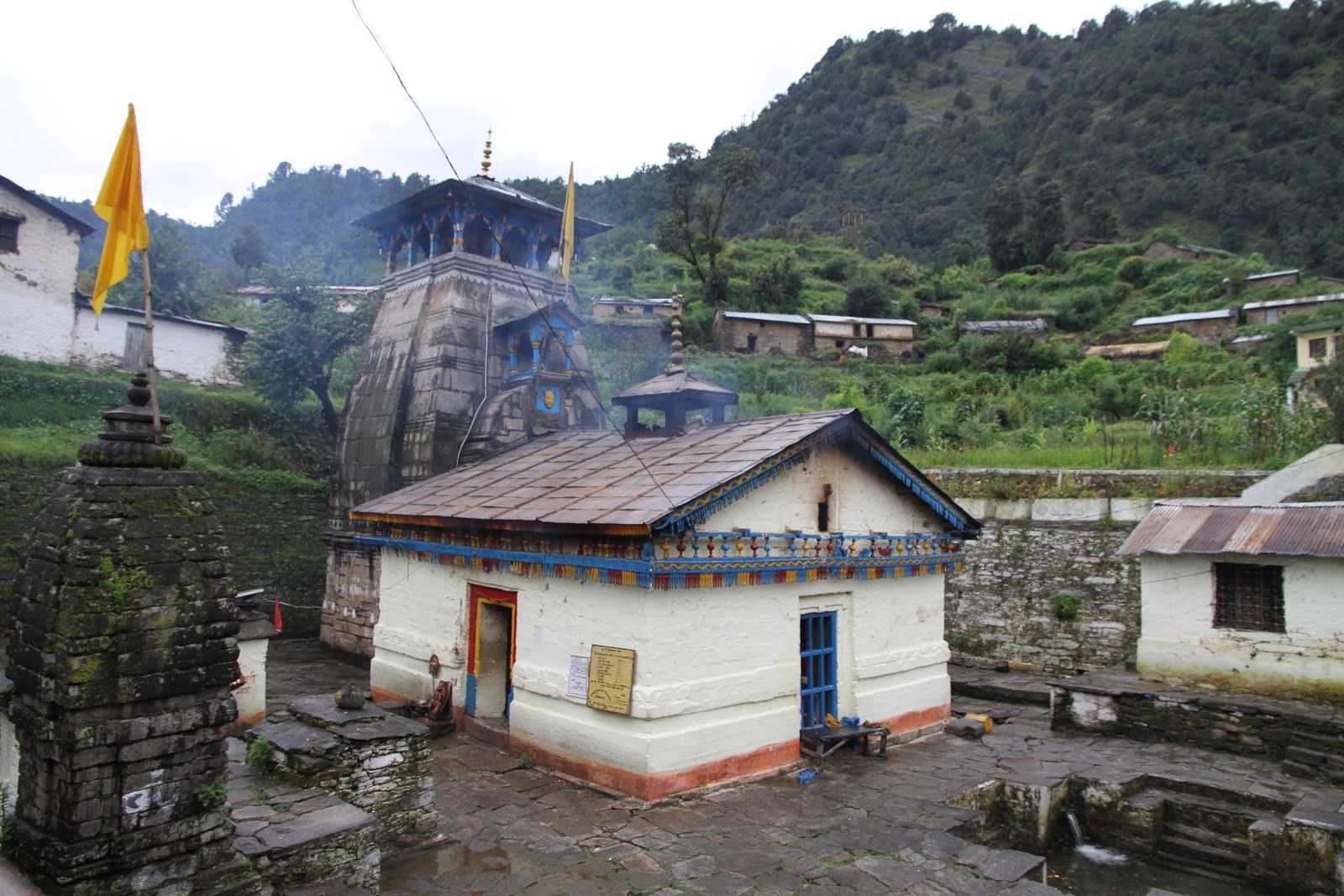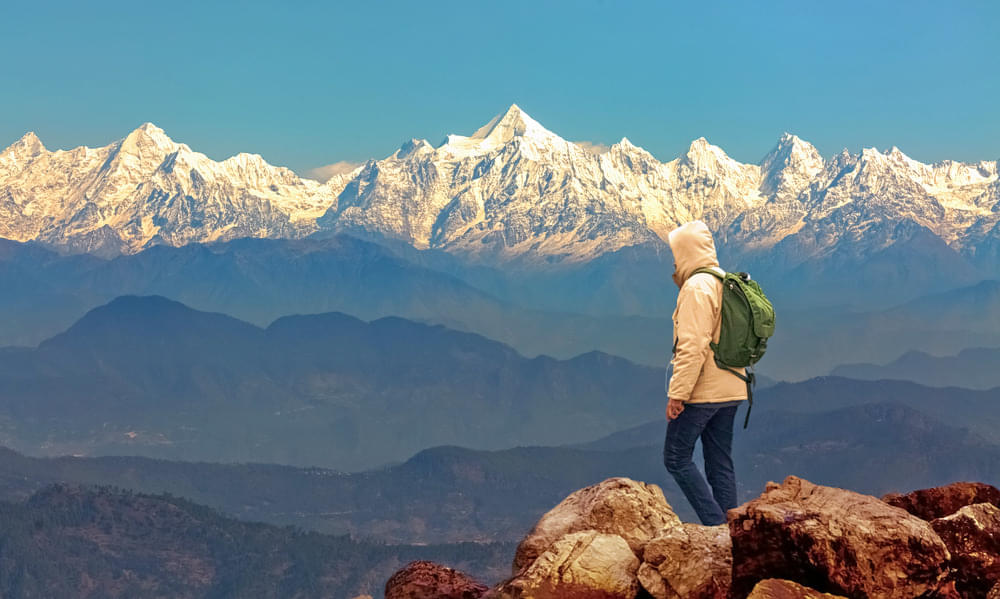Best Time to Visit Kalpeshwar Rudranath
Published on November 14, 2025
The Kalpeshwar–Rudranath region experiences distinct Himalayan seasons, each shaping the journey in a unique way. For travelers planning the Rudranath trek or visiting the sacred Kalpeshwar temple, understanding these seasonal shifts helps you choose the most comfortable and spiritually enriching time to travel.
Spring brings blooming rhododendrons and pleasant temperatures, making the forests vibrant and welcoming. Summer opens up the high-altitude routes completely, offering clear skies and smoother paths. Monsoon turns the valleys lush and mystical but can make trails slippery and unpredictable. Autumn is considered the most balanced season—crisp air, golden forests, and stunning visibility that makes every viewpoint unforgettable. Winter, however, adds a challenging layer of snow, restricting access to most parts of the Rudranath and Kalpeshwar Trek Package routes.
Each season carries its own charm, but knowing these changes ensures your spiritual and trekking journey becomes both safe and memorable.
Summer (April to June): Perfect Weather for Comfortable Trekking
Summer is the most welcoming season for exploring the sacred Himalayan routes, especially if you’re planning the Panch Kedar trek or traveling to Kalpeshwar from Delhi. From April to June, the weather stays pleasantly cool, with daytime temperatures ranging between 15°C to 22°C and nights dropping to a refreshing 8°C to 12°C—ideal for long walks and peaceful temple visits.
For pilgrims and trekkers taking the Rudranath Kalpeshwar trek, summer offers the safest and smoothest experience. The trails remain dry, forests bloom with fresh greenery, and the high ridges open up to clear, breathtaking views without weather interruptions. Families, beginners, and seasoned trekkers all find this period perfect, as it combines comfort with natural beauty.
Visiting the Kalpeshwar temple in summer feels especially calming. The gentle warmth, the cool breeze from the Kalpganga River, and the quiet atmosphere create a soothing environment for meditation and devotion.
Whether you seek a serene pilgrimage or a scenic trekking adventure, summer provides the most balanced and enjoyable conditions to explore this divine part of the Panch Kedar circuit.
Monsoon (July to September): Lush Beauty but Slippery Trails
Monsoon transforms the Kalpeshwar–Rudranath region into a vibrant green paradise. The forests turn denser, waterfalls roar with fresh energy, and the entire valley feels alive with misty winds and rain-kissed trails. For nature lovers, this is the season when every step feels poetic. But for those planning a Rudranath tour or attempting the Rudranath trek, monsoon also brings challenges you must be ready for.
During this season, temperatures range from 12°C to 18°C during the day and can drop to 8°C to 12°C at night, keeping the air cool and damp—perfect for those who enjoy misty walks but requiring warm, waterproof clothing.
The paths along the Kalpeshwar trek distance become slippery due to frequent rainfall, and visibility can shift quickly with moving clouds. The Rudranath trek distance, which already involves a long trail, becomes even more strenuous in heavy rain. Proper trekking shoes, rain gear, and cautious pacing are essential.
Despite the challenges, monsoon rewards you with emerald meadows, mist-covered forests, and roaring waterfalls. For those who love solitude and raw natural beauty, this season unveils a magical Himalayan charm unlike any other.

Autumn (October to November): Crystal-Clear Views & Festive Vibes
Autumn is considered the most ideal season for exploring the Kalpeshwar–Rudranath region. With skies clear and crisp, the Rudranath trek and Kalpeshwar trek distance become far more enjoyable, offering breathtaking panoramic views of snow-capped peaks and golden forests. Daytime temperatures range from 15°C to 20°C, while nights can drop to 7°C to 12°C, creating perfect conditions for trekking and sightseeing.
This season also coincides with local festivals, adding a vibrant cultural touch to your journey. The forests and meadows glow in warm shades of amber and red, making every step visually captivating. Families, pilgrims, and solo trekkers alike find this time perfect for a Rudranath tour, as the trails are dry, safe, and less crowded than in summer.
For those planning a trek from Delhi or neighboring cities, autumn ensures comfortable travel and a scenic experience that blends natural beauty with spiritual serenity. It’s the perfect balance of adventure, culture, and calm—a season that makes every trek to Kalpeshwar temple or Rudranath truly unforgettable.
ChatGPT said:
Winter (December to March): Harsh Conditions & Limited Accessibility
Winter in the Kalpeshwar–Rudranath region is beautiful but challenging. Heavy snowfall, icy trails, and sub-zero temperatures make trekking difficult, limiting access to many routes. For those planning a Rudranath trek or a visit to the Kalpeshwar temple, the journey becomes physically demanding and is recommended only for experienced trekkers.
Temperatures during this season can range from -5°C to 5°C during the day and drop to -10°C to -2°C at night, making proper winter gear essential. The Kalpeshwar trek distance and Rudranath trek distance both feel longer and tougher in these conditions, with many high-altitude sections covered in snow and ice.
Winter, however, has its own quiet charm. Snow-clad forests and frozen streams create a pristine landscape, and the solitude offers a unique spiritual experience. Travelers opting for the Rudranath and Kalpeshwar trek package during this season must plan carefully, check weather updates regularly, and be prepared for limited accessibility along certain stretches.
For families and casual pilgrims, winter is generally not recommended, but for adventure seekers, it’s an opportunity to witness Chopta’s high Himalayan beauty in its most untouched form.

Ideal Months for the Kalpeshwar Trek
April – June: Summer Bliss
This is the most comfortable period for the Rudranath Kalpeshwar trek. Trails are fully accessible, weather is pleasant, and forests are in bloom. Daytime temperatures range 15°C–22°C while nights stay around 8°C–12°C. The Kalpeshwar temple can be visited easily, and the Kalpeshwar trek distance feels manageable for families and first-time trekkers.
July – September: Monsoon Magic (With Caution)
The region becomes lush and green, making the Rudranath trek visually spectacular. However, heavy rains can make the Kalpeshwar trek distance slippery and challenging. Travelers must carry waterproof gear and move cautiously, but the reward is emerald forests, roaring waterfalls, and fewer crowds. Kalpeshwar temple visits are possible but may require extra care.
October – November: Autumn Perfection
Autumn is ideal for both trekking and sightseeing. Clear skies and crisp air make the Rudranath Kalpeshwar trek safer and more enjoyable. Day temperatures hover 15°C–20°C and nights 7°C–12°C. The Kalpeshwar temple looks stunning against golden forests, and the Kalpeshwar trek distance can be completed comfortably with panoramic views.
December – March: Winter Challenges
Heavy snow and sub-zero temperatures limit accessibility. The Rudranath trek becomes strenuous, and parts of the Kalpeshwar trek distance may be blocked. The Kalpeshwar temple can still be visited in lower areas, but this season is recommended only for experienced trekkers equipped for harsh winter conditions. Daytime temps can drop to -5°C to 5°C, and nights fall to -10°C to -2°C.
| Month | Weather / Temperature | Trek Conditions | Highlights | Notes |
|---|---|---|---|---|
| April – June | Day: 15°C–22°C Night: 8°C–12°C | Trails fully accessible, moderate difficulty | Blooming forests, pleasant trekking | Ideal for families and first-time trekkers; Kalpeshwar temple easily accessible; Kalpeshwar trek distance comfortable |
| July – September | Day: 12°C–18°C Night: 8°C–12°C | Slippery due to rains | Lush greenery, waterfalls, fewer crowds | Take precautions; waterproof gear recommended for Rudranath trek and visiting Kalpeshwar temple |
| October – November | Day: 15°C–20°C Night: 7°C–12°C | Dry trails, moderate difficulty | Clear skies, panoramic views, festive vibes | Best season for Rudranath Kalpeshwar trek; Kalpeshwar trek distance comfortably manageable |
| December – March | Day: -5°C–5°C Night: -10°C–-2°C | Snow-covered, difficult | Snow-capped landscapes, serene solitude | Recommended only for experienced trekkers; parts of Kalpeshwar trek distance may be blocked; visit Kalpeshwar temple in lower accessible areas |

Best Months for the Rudranath Trek
April – June: Ideal Summer Trekking
The Rudranath trek is best approached during these months, as the weather is pleasant and the trails are fully open. Daytime temperatures range 15°C–22°C, and nights are around 8°C–12°C, making the journey comfortable. Families and first-time trekkers can enjoy the Rudranath Kalpeshwar trek circuit without strain. The sacred Kalpeshwar temple is easily accessible, and the Rudranath trek distance feels manageable.
July – September: Monsoon Caution
During the monsoon, the forests are lush and waterfalls flow abundantly, enhancing the scenic beauty. However, the Rudranath trek becomes slippery, and some sections of the Rudranath trek distance require extra caution. Travelers must carry waterproof gear. Visiting the Kalpeshwar temple is possible but requires careful planning.
October – November: Autumn Perfection
Clear skies and crisp air make this season the safest and most rewarding for the Rudranath trek. Day temperatures hover 15°C–20°C, and nights drop to 7°C–12°C. The Rudranath Kalpeshwar trek route offers panoramic Himalayan views, and the Kalpeshwar temple appears striking against autumn-colored forests.
December – March: Winter Challenges
Heavy snowfall and icy paths make the Rudranath trek very challenging. The Rudranath trek distance may be partially blocked, and temperatures can drop from -5°C to 5°C during the day and -10°C to -2°C at night. Only experienced trekkers should attempt this season. Lower sections allow access to the Kalpeshwar temple, but high-altitude trekking is not recommended.
| Month | Weather / Temperature | Trek Conditions | Highlights | Notes |
|---|---|---|---|---|
| April – June | Day: 15°C–22°C Night: 8°C–12°C | Trails fully open, moderate difficulty | Pleasant trekking, blooming forests | Ideal for families and beginners; part of Rudranath Kalpeshwar trek; Kalpeshwar temple easily accessible; Rudranath trek distance manageable |
| July – September | Day: 12°C–18°C Night: 8°C–12°C | Slippery trails due to rain | Lush greenery, waterfalls, fewer crowds | Waterproof gear essential; caution on Rudranath trek distance; visiting Kalpeshwar temple possible but careful |
| October – November | Day: 15°C–20°C Night: 7°C–12°C | Dry trails, moderate difficulty | Clear skies, panoramic views, autumn colors | Best season for Rudranath trek; scenic views along Rudranath Kalpeshwar trek; Kalpeshwar temple stunning |
| December – March | Day: -5°C–5°C Night: -10°C–-2°C | Snow-covered, difficult | Snowy landscapes, serene solitude | Only for experienced trekkers; parts of Rudranath trek distance may be blocked; Kalpeshwar temple accessible in lower areas |

Weather Tips for First-Time Pilgrims & Trekkers
For first-time pilgrims and trekkers, understanding the weather is key to enjoying the Rudranath trek and visiting the sacred Kalpeshwar temple safely. The region’s Himalayan climate can shift rapidly, so preparation makes all the difference, especially if you’re opting for a Rudranath and Kalpeshwar trek package.
During summer (April to June), the weather is mild and pleasant, making the trails easy to navigate and the Kalpeshwar temple fully accessible. Daytime temperatures stay comfortable, while nights are slightly chilly, so carrying light woolens is recommended.
Monsoon (July to September) brings lush greenery but also slippery trails. Trekking during this period demands waterproof shoes, raincoats, and extra caution along the Rudranath trek distance. Autumn (October to November) is ideal, with clear skies, crisp air, and panoramic views, making both trekking and temple visits enjoyable. Winter (December to March) is harsh, with snow-covered paths and freezing temperatures, so only experienced trekkers with proper gear should attempt it.
For beginners, packing layers, checking forecasts daily, and carrying essentials like gloves, hats, and water is crucial. A well-prepared trek ensures that your Rudranath and Kalpeshwar trek package becomes a memorable journey of devotion, adventure, and Himalayan beauty.
When to Avoid the Trek for Safety Reasons
While the Rudranath trek and visits to the Kalpeshwar temple are incredibly rewarding, safety should always come first. There are specific periods and conditions when it’s best to postpone your journey, even if you’re planning a Rudranath and Kalpeshwar trek package.
Monsoon Hazards (July to September): Heavy rains make trails slippery, rivers swell, and landslides can occur. Attempting the Rudranath trek distance during this period increases the risk of accidents, so only experienced trekkers with proper gear should consider it.
Winter Extremes (December to March): Snow accumulation, icy paths, and sub-zero temperatures make higher sections almost inaccessible. The Kalpeshwar temple in lower areas may be reachable, but trekking beyond is dangerous for beginners and families.
Unforeseen Weather Changes: Sudden storms, thick fog, or unexpected snowfall can occur in any season. Always check local weather forecasts before starting your trek and be ready to adjust plans.
Health Considerations: Altitude sickness can affect first-time trekkers. If anyone in your group has health concerns, avoid attempting long stretches of the Rudranath trek distance without acclimatization.
By respecting these safety guidelines, your Rudranath and Kalpeshwar trek package remains a joyful, worry-free experience—letting you enjoy the spiritual and natural beauty of the Himalayas without unnecessary risks.

Final Recommendation: The Perfect Season for a Balanced Experience
For those planning the Rudranath Kalpeshwar trek, the key to a memorable and safe journey lies in choosing the right season. The months of April to June and October to November strike the perfect balance between pleasant weather, clear skies, and accessible trails, making the Rudranath trek both enjoyable and spiritually fulfilling.
During these periods, the Rudranath to Kalpeshwar distance can be comfortably covered, allowing trekkers to take in the scenic forests, meadows, and rivers along the route without feeling rushed or fatigued. The crisp air, minimal rainfall, and moderate temperatures also make visiting the Kalpeshwar temple a serene experience, where pilgrims can soak in the spiritual atmosphere without worrying about harsh weather.
While summer offers blooming landscapes and smooth paths, autumn brings panoramic mountain views and colorful forests, making both seasons ideal for first-timers and experienced trekkers alike. Planning your Rudranath Kalpeshwar trek during these months ensures a safe, visually stunning, and spiritually enriching journey through the heart of the Himalayas.
Frequently Asked Questions:
1. What is the best season to attempt the Rudranath Kalpeshwar trek?
The ideal months are April to June and October to November, offering pleasant weather, clear trails, and safer trekking conditions.
2. How long is the Rudranath to Kalpeshwar distance?
The distance varies depending on the trail, but the trek typically covers 10–12 km, which can be completed comfortably over a day or two, depending on your pace and breaks.
3. Is the trek suitable for first-time trekkers or families?
Yes, the Rudranath trek is moderately challenging, and with proper pacing, families and beginners can enjoy it, especially when following a Rudranath and Kalpeshwar trek package.
4. Can we visit the Kalpeshwar temple during the trek?
Absolutely. The Kalpeshwar temple is a major highlight of the trek, accessible in all seasons except during heavy snow in winter.
5. What are the temperature ranges trekkers should expect?
Summer days range 15°C–22°C and nights 8°C–12°C; autumn days are 15°C–20°C, nights 7°C–12°C; monsoon days 12°C–18°C; winter can drop from -5°C to 5°C, with nights as low as -10°C.
6. How difficult is the Rudranath trek distance?
The trek distance is moderate. Trails are well-marked, but some sections are steep. Pacing yourself and taking breaks ensures a comfortable journey, even for first-timers.
7. Are trekking packages available from Delhi?
Yes, there are organized Rudranath and Kalpeshwar trek packages from Delhi, which include transportation, accommodations, guides, and meals.
8. Can the trek be attempted during the monsoon?
It’s possible but risky. Heavy rains make the trails slippery, increasing the chance of accidents. Waterproof gear and extra caution are mandatory.
9. What should first-time pilgrims carry for the trek?
Essentials include trekking shoes, layered clothing, rain gear, gloves, hats, water, snacks, and a small first-aid kit. This ensures comfort while visiting the Kalpeshwar temple along the trek.
10. Is winter trekking recommended?
Winter (December–March) is only for experienced trekkers due to snow, icy trails, and harsh temperatures. Lower regions near the Kalpeshwar temple remain accessible but higher sections may be blocked.



